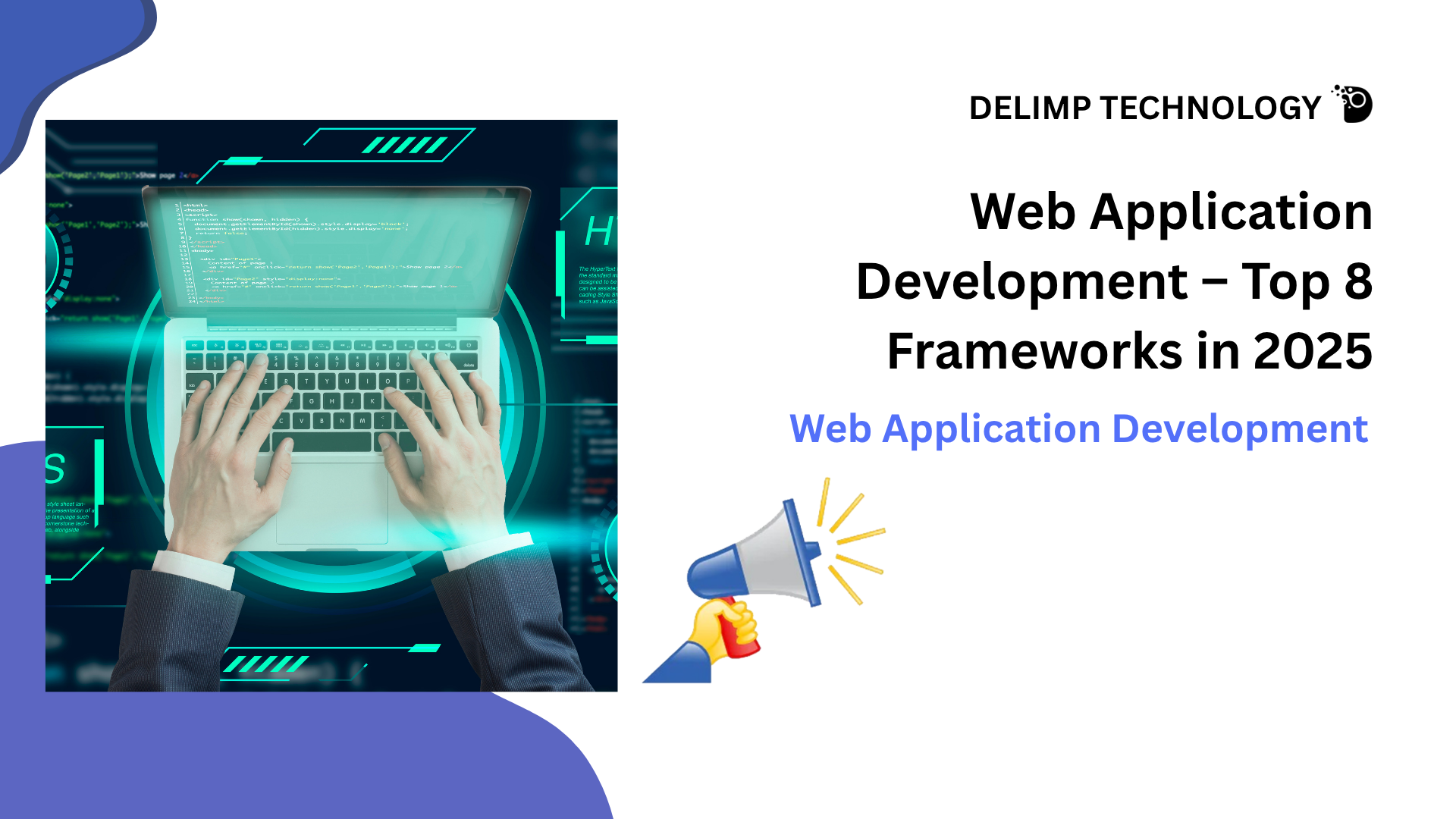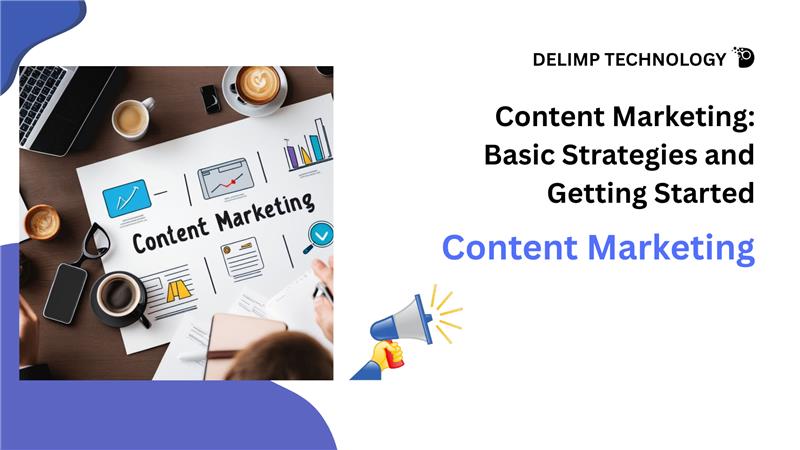A developer needs to recognize the role frameworks play in making great Web Application Development Services to fulfill their project requirements. With pre-built tools, development frameworks allow you to make awesome applications. This blog exists to make it easier for developers to decide which framework to use. The list below shows the 8 top frameworks provided. Delimp Technology Company has a wide range of outstanding options, including React JS and AngularJS.
Here are the Top 8 web application development frameworks in 2025:
1. VueJS
It is a forward-looking JavaScript framework that is made to create single-page apps and user interfaces. The core library, which focuses only on the visual layer, makes Vue.js simple to learn and integrate with additional programs or libraries.
Key features of Vue.js include:
- You can easily start with Vue.js because it is made for easy adoption. Due to this, developers can start using Vue in smaller parts as needed.
- Its abilities make it simple to create dynamic and responsive interfaces.
- Its quickness and adaptability are both crucial components.
2. ReactJs
A ReactJS web application development company, which comes from Facebook, has made a big difference in the mobile application world by stressing the use of dynamic and interactive user interfaces.
Key Features of React.js
- Because React.js works for the web and mobile, it is easy for developers to use it for various projects.
- Reusable components are the outcome of a component-based architecture.
- Using Virtual Document Object Model (DOM) ensures that only the updated components are rendered and helps keep the app’s performance high by using an efficient virtual Document Object Model.
- Many plugin and extension options are provided by the robust community. Likewise, it has tools such as Create a React.js App and Next.js that help with project setup.
3. Ruby on Rails
Ruby on Rails, sometimes known as Rails, is a Ruby-based web application platform for servers. It helps make programming web applications simpler because all web application developers are presumed to have common needs from the start. Rails distinguishes itself by using standard practices, which expedite the development process. Developers like this framework for creating visually appealing and highly efficient web apps.
Key Features of Ruby on Rails
- Rails adheres to common standards; developers need to write less code for routine operations.
- With scaffolding, it is possible to quickly assemble the important parts of a web application.
- Using Active Record ORM (Object-Relational Mapping), interacting with the database is straightforward and efficient.
4. AngularJS
Google has created AngularJS Development Services, which is a useful framework for web application development. Developing an AngularJS web application means using TypeScript and benefiting from its detailed structure and many features.
Key Features of AngularJS
- With two-way data binding, both model and view changes are synchronized more easily.
- Using dependency injection helps with web application development by allowing the use of previously made services.
- With TypeScript, the code is better structured and simpler to keep up to date with static typing.
- Modular Development helps organize the code into sections that can be used several times.
5. Django
Many people value Django due to its pre-packaged features. Using it, it is possible to design large-scale web applications rapidly. It enables developers to create something fast using a simple and practical structure. One should know that Django is a high-end Python framework.
Key Features of Django:
- Django uses object-relational mapping to work with databases. If you require high security, it is the best choice.
- It is easy to use Django since it has basic settings and improves repetition. Security is important with Django, and it provides help with building secure websites.
- Django apps can become very big and deal with a heavy flow of users.
6. Flask
Developers choose Flask, a micro web framework written in Python when they want to make web applications fast. Using it is simple and quick, so projects like small applications or progressive web application development can be finished swiftly.
Key Features of Flask:
- It is easy to use and does not get in the way because it is uncomplicated and flexible.
- Significant Support from the Community, Picking up new things is much simpler when there are many helpful people, raw information, and comprehensive guides.
- Because of its features, Flask can be used to build small- to medium-sized projects that get more complex as needed.
- Unlike other frameworks that lead developers, Flask allows freedom in deciding the structure of applications.
7. ExpressJS
This well-liked ExpressJS web framework is used to build unique web apps. Using it, developers can develop strong web applications and APIs that can handle a growing number of users.
Key features of ExpressJS:
- ExpressJS makes it possible for developers to structure their applications as they like, with no fixed guidelines.
- There are tools in Sinatra to ensure HTTP requests and responses work properly. For this reason, ExpressJS is the top choice for building light web servers and small microservices.
- ExpressJS depends on JavaScript, which is a widely used programming language, to handle the tasks that take place on the server side.
- All over the world, developers like it because it offers great flexibility and makes building APIs simple.
8. Laravel
In 2011, Taylor Otwell created Laravel, which is known for being straightforward, fashionable, and simple to pick up. Think of Laravel as an extensive set of tools for PHP developers. It operates in the same way as other current web frameworks, and it is based on PHP development Services, which are generally in high demand. It comes with many additional tools that boost its performance.
Key Features of Laravel:
- Laravel includes helpful features, for example, dependency injection and server-side rendering. With Laravel, the code is clean, and its tools are straightforward.
- Interestingly, it brings order to the frequent tasks mentioned earlier: user authentication, web page routing, and data caching.
- For this reason, we can save time and concentrate on creating original web apps.
- User-friendly Object-Relational Mapping (ORM), Blade templates, and several useful packages allow you to easily develop and take care of web applications in Laravel.
Conclusion
Overall, we can produce lovely, dynamic web applications without starting with zero code. Still, there are numerous frameworks that developers can pick from. Consequently, there is a good chance that developers might get confused when choosing the right framework for their project.
Frequently Asked Questions (FAQs)
1. What aspects need to be taken into account while selecting a framework for developing web applications?
Ans: The most crucial elements are taking into account your project’s needs, the tech stack, scalability requirements, and the available money.
2. How Can a Web Application Be Developed?
Ans: First, you must choose a concept. Build the application’s functionality around the idea. Make the user interface simple. Use HTML, CSS, and JavaScript to code the application. Test and adjust in response to comments.
3. What is the development of web applications?
Ans: It’s the process of creating web browser applications. Create the front end. Configure the database and back end. Connect everything to ensure internet functionality.
4. How Can a Web Application Be Constructed?
Ans: Select a tech stack and create your user interface. Write both the back-end and front-end code. Include a safe database. Give it a thorough test. Start and keep becoming better.





